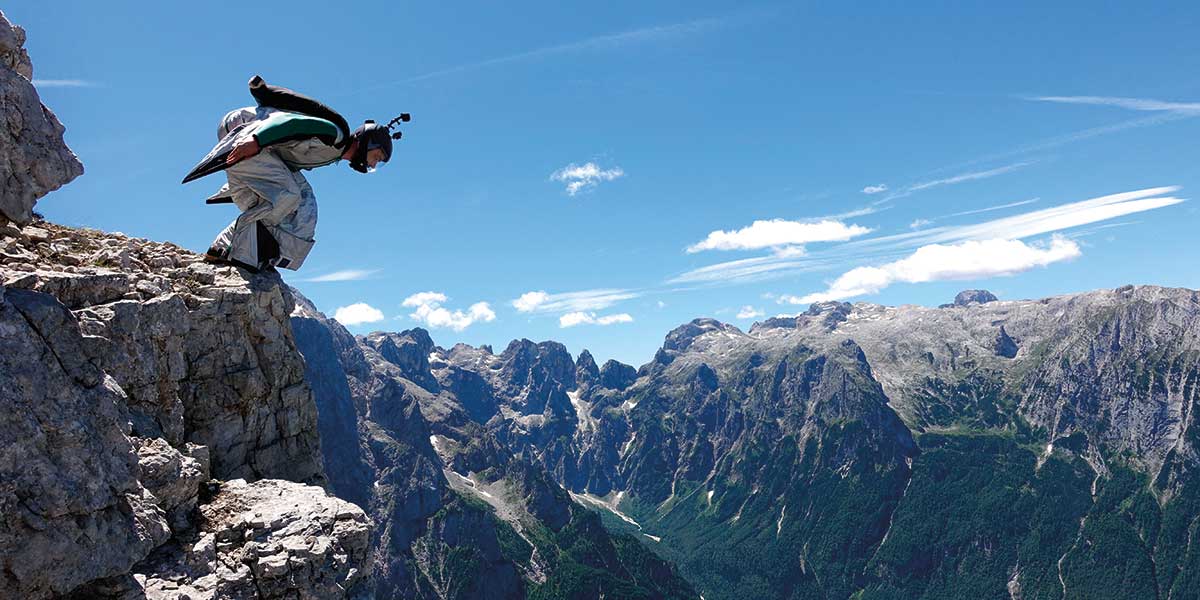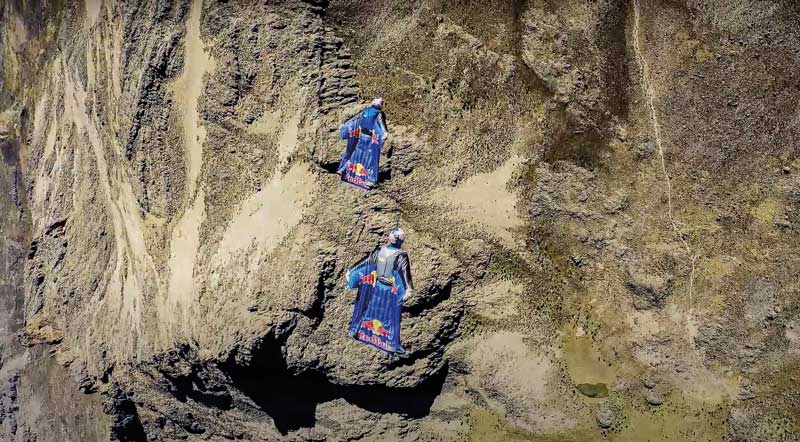The most natural and exhilarating way to move through the air is in a wingsuit.
Just as Greek mythology tells us that Daedalus made wings for his son Icarus by tying feathers together with thread and fusing them with wax in order to fly away from the island of Crete, with a sad end in the XXI century, Wingsuit Flying is the updated interpretation of flying powered only by the force of the wind.
The wingsuit, which is the name given to the suit used to practice Wingsuit Flying, revolutionizes the concept of parachuting, taking it to a new level by experiencing the sensation of jumping into the void and descending at high speed. This garment defies the laws of nature and allows its wearer to be the master of the sky.
Experts in this type of extreme flying say that at least 500 parachute jumps are required before putting on a wingsuit, so only the most experienced pilots have the chance to try it, dressed as if they were flying squirrels.
The first wingsuit appeared in 1930, and several dozen different designs followed. The fact is that it was – and still is – a very risky sport that has claimed more than one life. Perhaps the first attempts were fatal, so the practice of this extreme sport did not have many followers.
Its popularization was at the end of the last century – year 1999 – with the appearance of a relatively safe wingsuit, created by the Finnish Jari Kuosma and the Croatian Robert Pecnik, which they commercialized and meant the birth of this sport by gaining a good number of followers. Both persons were responsible for creating a program of instructors and initiating a campaign to reverse the image of paragliding as dangerous.
The fact is that no matter how much advice and instructions are given by Kuosma and Pecnik and other experts, wingflying is – and will remain – a high-risk and deadly sport. Most of the accidents happened because the pilots did not have the necessary experience, or because they were overconfident or overextended. On this last point, in order to increase the feeling of speed and adrenaline, many pilots fly too close to the ground or to the slopes of mountains, thus increasing the possible margin of error.
How to fly
By design, the wingsuit reduces vertical displacement and favors horizontal displacement. The wingsuit does not allow the pilot to slow down or stop his flight, so the equipment includes a small parachute that is connected to the main parachute bag. The pilot then deploys the parachute and begins gliding before landing.
The wingsuit is made of nylon (or some other resistant fabric) with three wings: two of them connect the arms to the torso and a third one connects the legs to each other, turning the pilot into a wing that generates a resistance to the air that opposes the direction of movement. Because of its aerodynamic profile, the air resistance can propel it upward with a force called lift.
In the case of air suits, and unlike airplanes, the lift does not go so far as to lift them up - not even to slow them down to a safe speed for landing. However, it does allow you to convert that resistance into a considerable upward thrust and to move horizontally at high speeds (three meters forward for every meter you fall).
The Stages
Wingsuit pilots have two scenarios to perform their jumps. The first is from an aircraft, which can be an airplane, a hot air balloon, a helicopter or a paraglide; the second is the so-called BASE jump, from buildings (Building), antennas (Antenna), viaducts (Span) or geographical accidents (Earth). Depending on the location, the pilot must use different techniques, which he must know and master perfectly.
Highest BASE jump: 25,262 ft. Valery Rozov (Russia), on Cho Oyu, on the border between Nepal and Tibet. October 5, 2016.
Longest flight: 09:06 minutes (before opening his parachute). Jhonathan Flórez (Colombia), in La Guajira, Colombia. April 20, 2012.
Maximum speed: 246.12 mph. Fraser Corsan (England).
Longest distance: 105.29 ft. Kyle Lobpries (United States).
Shortest distance (in BASE jump): 9.44 ft. Pat Walker (United States).
Text: Ricardo Villanueva ± Photo: Netcarshow.com, Mechatronik, European




